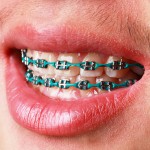
Yesterday (Dental Elf 13th Nov 2012) we looked at a systematic review assessing failure rates of mini-screw implants for orthodontic anchorage. Today we are looking at a review consider whether recommended maximum insertion torque values of 5 to 10 Ncm were associated with higher success rates of orthodontic mini-implants than those inserted with torque values beyond this range.
A wide selection of databases were searched including, Google Scholar, Medline, Embase, Cochrane CENTRAL, Science Direct, Scopus, Web of Science, LILACS, Open Grey, the Health Management Information Consortium, and the National Technical Information Service. A number of orthodontic journals were also hand searched. Studies were assessed for risk of bias and quality rated using the GRADE approach. Studies with sample sizes of 10 or more, that recorded maximum insertion torque, inserted implants with a diameter smaller than 2.5 mm, and applied orthodontic forces for a minimum duration of 4 months were included.
- Seven nonrandomized studies met the eligibility criteria, 4 of which were published by the same research group. All had at least two domains that scored as high risk of bias.
The authors concluded
Currently, there is no evidence to recommend specific maximum insertion torque levels to obtain higher success rates of orthodontic mini-implants.
Comment
This review looked at one potential risk factor for the failure of orthodontic-mini-screws. Compared with the review considered yesterday (Dental Elf 13th Nov 2012) it included 7 studies compared with the 4 they included although both review consider to quality of evidence available poor. A detailed discussion of the identified evidence and its limitations was included.
Links
Meursinge Reynders RA, Ronchi L, Ladu L, van Etten-Jamaludin F, Bipat S. Insertion torque and success of orthodontic mini-implants: A systematic review. Am J Orthod Dentofacial Orthop. 2012 Nov;142(5):596-614.e5. doi: 10.1016/j.ajodo.2012.06.013. PubMed PMID: 23116501
